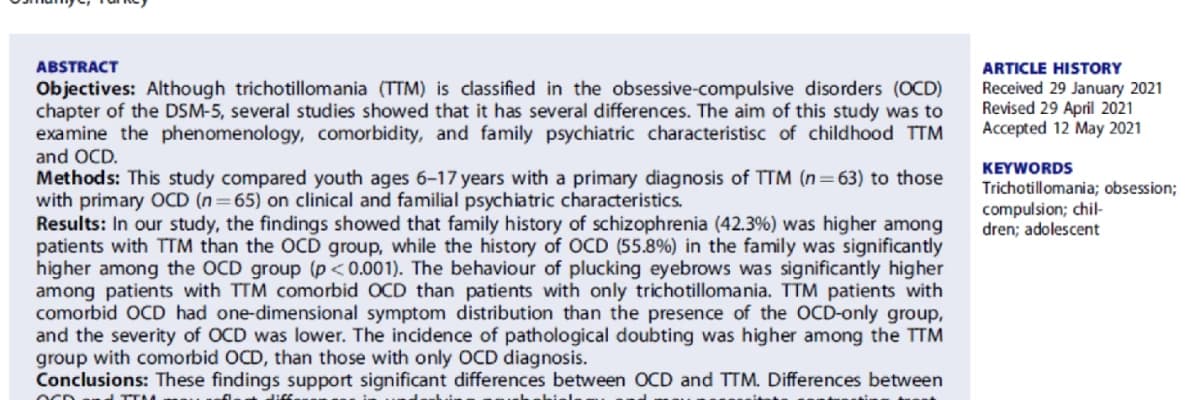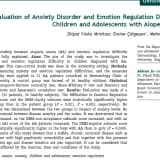A comparison of phenomenological, clinical and familial psychiatric features of pediatric OCD and trichotillomania
Doç. Dr. Dilşad Yıldız Miniksar
3 Ağustos 2024129 görüntülenme
Objectives: Although trichotillomania (TTM) is classified in the obsessive-compulsive disorders (OCD)
chapter of the DSM-5, several studies showed that it has several differences. The aim of this study was to
examine the phenomenology, comorbidity, and family psychiatric characteristisc of childhood TTM
and OCD.
Methods: This study compared youth ages 6–17 years with a primary diagnosis of TTM (n¼63) to those
with primary OCD (n¼65) on clinical and familial psychiatric characteristics.
Results: In our study, the findings showed that family history of schizophrenia (42.3%) was higher among
patients with TTM than the OCD group, while the history of OCD (55.8%) in the family was significantly
higher among the OCD group (p<0.001). The behaviour of plucking eyebrows was significantly higher
among patients with TTM comorbid OCD than patients with only trichotillomania. TTM patients with
comorbid OCD had one-dimensional symptom distribution than the presence of the OCD-only group,
and the severity of OCD was lower. The incidence of pathological doubting was higher among the TTM
group with comorbid OCD, than those with only OCD diagnosis.
Conclusions: These findings support significant differences between OCD and TTM. Differences between
OCD and TTM may reflect differences in underlying psychobiology, and may necessitate contrasting treatment
approaches.

A comparison of phenomenological, clinical and familial psychiatric features of pediatric OCD and trichotillomania

